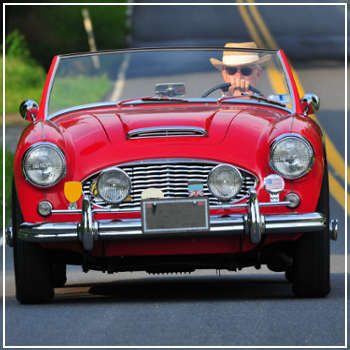If you're eyeing a classic muscle car, whether you're restoring it yourself, hiring a professional mechanic, or simply upgrading it for daily use, one big hurdle is getting your hands on the right parts. Many classic cars don’t have their components readily available at your local auto shop. You might need to special-order specific parts, join a classic car community, or even attend car auctions to track down certain vintage items. Additionally, keep in mind that many classic cars weren’t built with the same modern standards as today’s vehicles. If you plan to use your classic car as a daily driver, consider retrofitting it with essential safety upgrades like seatbelts and airbags to ensure it meets contemporary safety requirements. When you’re considering a luxury sports car like a Porsche or a Mercedes, you’ll notice that while they come equipped with the basic safety features, they aren’t necessarily built to last as long as mainstream models. Over time, these cars tend to become costly to maintain due to their complex designs and specialized components. On top of this, sports cars often prioritize active safety features—like adaptive cruise control and lane-keeping assistance—that help prevent accidents. However, they sometimes lack important passive safety elements such as adjustable headrests. Most sports cars feature high-back bucket seats that don’t offer much adjustability, which could compromise comfort and safety during sudden stops or collisions. Adjustable headrests, on the other hand, are designed to reduce the risk of neck injuries and can be adjusted to suit different drivers. Sports cars, regardless of their make or model, tend to share certain design characteristics that make them appealing but also raise concerns about safety. They are typically smaller, narrower, lighter, and closer to the ground, making them ideal for speed but less so for practicality: Not all vehicles receive the same level of safety testing. The Insurance Institute for Highway Safety (IIHS) and the National Highway Traffic Safety Administration (NHTSA) might not have evaluated the car you’re considering. Many low-production vehicles never undergo crash tests, especially if they aren’t among the market’s top sellers. For instance, IIHS only began testing convertibles in 2007—and even then, only the most popular models. This lack of thorough testing leaves buyers in the dark about potential safety flaws until after an accident occurs. Whether you’re restoring an old classic or maintaining a current sports car, trust DaSilva’s Auto Body for expert repairs. Our team uses state-of-the-art equipment to evaluate your vehicle and provide tailored recommendations for repairs and replacements. Contact us at our Naugatuck location to book an appointment today. Remember, owning a sports car is a dream for many, but it comes with unique responsibilities. Stay informed, and always prioritize safety! Carpet Film,Pe Plastic Masking Film,Scratch Protection Film,Transparent Protection Film Wuxi Xinhao Protective Film CO.,Ltd , https://www.cotton-balewrap.com So, you’ve found the sports car of your dreams—exactly the style and performance you’ve been looking for. But before you dive into financing or sign any papers, take a moment to think about some of the common challenges that come with owning a sports car. These vehicles, while thrilling to drive, can present unique issues when it comes to maintenance, safety, and even finding parts down the road.
So, you’ve found the sports car of your dreams—exactly the style and performance you’ve been looking for. But before you dive into financing or sign any papers, take a moment to think about some of the common challenges that come with owning a sports car. These vehicles, while thrilling to drive, can present unique issues when it comes to maintenance, safety, and even finding parts down the road.1. The Hunt for Parts
2. Uneven Safety Features
3. Design Challenges
4. Limited Crash Testing
4 Common Problems with Sports Cars
